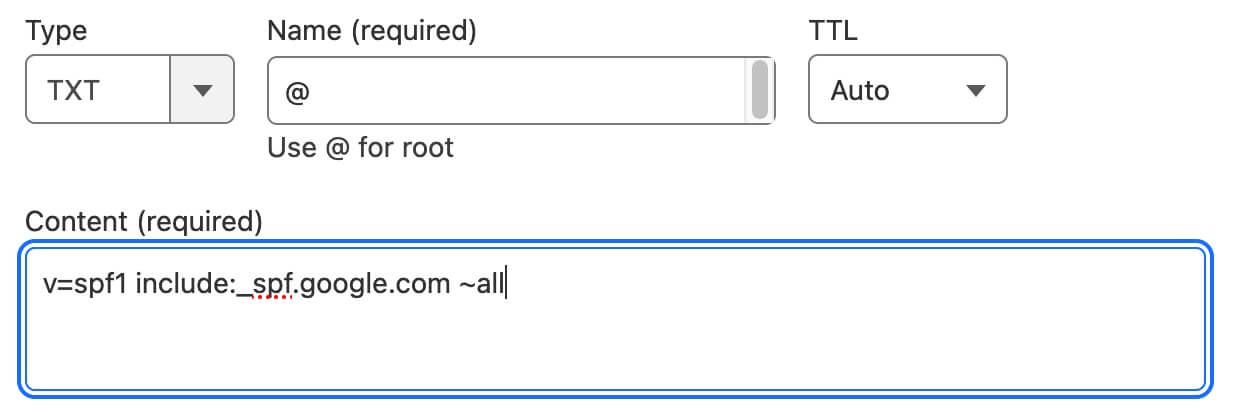
Email marketing is a powerful tool for engaging with your target audience. It allows for personalized content and delivers measurable results. At TMBR, we excel in helping our clients effectively grow and engage their email lists, which is a key component of successful digital marketing strategies. However, the effectiveness of email marketing depends on your emails actually reaching your customers’ inboxes.
Starting February 2024, major email providers like Gmail and Yahoo will implement new requirements for bulk email senders. Any sender dispatching over 5,000 emails per day will need to have a DMARC (Domain-based Message Authentication, Reporting, and Conformance) policy in place. Failing to comply with this requirement could result in your emails being marked as spam or not being delivered at all.
TL;DR
TMBR can help you set these records up. Get Started
How to keep your emails in customers inbox:
Keeping emails delivering requires the use of SPF, DKIM, and DMARC Domain Name System records to ensure that emails are legitimately from you and haven’t been tampered with.
What the heck is SPF, DKIM, and DMARC?
SPF (Sender Policy Framework)
Imagine you have a list of people who are allowed to send letters from your house. SPF is like that, but for emails. It’s a list of servers that are permitted to send emails on behalf of your domain (like @yourcompany.com). When an email is sent, the recipient’s server checks this list. If the server sending the email isn’t on the list, the email can be marked as suspicious.
DKIM (DomainKeys Identified Mail)
Think of DKIM as a secret seal or signature you put on your emails. This seal is a digital signature that is attached to your emails. When you send an email, this signature is added to it. The receiving server can use this signature to verify that the email hasn’t been tampered with during transit and that it really comes from you or your organization.
DMARC (Domain-based Message Authentication, Reporting, and Conformance)
DMARC is like a set of rules or a policy for how to handle emails that fail SPF and DKIM checks. It tells email receivers what to do when they get an email that doesn’t pass these checks. Should they reject it, quarantine it, or just let it through but report back to you about it? DMARC also includes a reporting feature, so you can get feedback on who is sending emails on behalf of your domain and whether they are passing or failing these authentication checks.
How do I implement this?
Adding and managing these records requires you are comfortable with DNS (or Domain Name System) configuration of your domain. Once you have access to where your DNS is managed you go to your DNS settings and add a TXT record for each SPF, DKIM, and DMARC. Creating the values for these records is unique for each organization and varies widely on the services you use. Below we will add some example records however we DO NOT recommend copy and pasting these.
SPF Example:
v=spf1 include:_spf.google.com ~all

Type: TXT Name: @ Value: v=spf1 include:_spf.google.com ~all
This record will allow emails to be sent from gStuite on behalf of your domain. Most all organizations will need more than one record or approved sender.
DKIM Example
The setup for this will depend on your email relay provider like Google, Microsoft 365, Mailchimp, Klaviyo and so on.
DMARC Example
_dmarc v=DMARC1; p=none
Type: TXT Name: _dmarc Value: v=DMARC1; p=none
This DMARC record is where we recommend starting out at. When set to “none,” the inbox will decide where to put the email even if it comes from an unauthenticated source. With p=none, someone could spoof your email domain and still land in the inbox.The good news for any brand setting up DMARC for the first time: Gmail and Yahoo say that your DMARC policy can be set to “none”
Should I turn DMARC to enforcement?
Likely no to start. We recommend using a monitor level of DMARC ( p=none ) and to spend some time making sure you have all approved sending domains added to your SPF records and the appropriate DKIM records added before turning on DMARC enforcement. Valimail’s DMARC Monitor or Postmark’s DMARC tool and Cloudflair all have helpful monitoring tools.